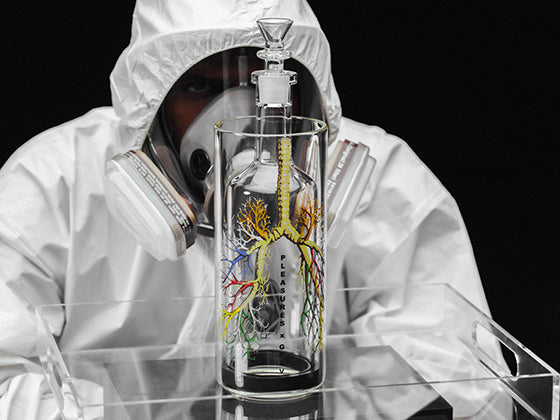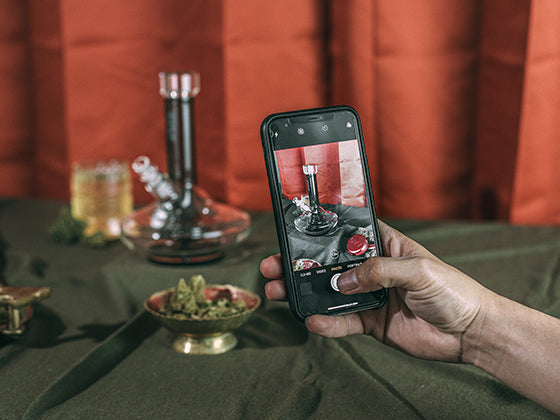I’m going to be 100% honest here — I don’t know if I have the language or the mental capacity to describe Netflix’s The Midnight Gospel.
But dammit, I’m gonna try.
First — the basics. The Midnight Gospel is an animated show created by podcaster and actor Duncan Trussell and Adventure Time creator Pendleton Ward.
At its core, the show reimagines episodes of Trussell’s podcast, The Duncan Trussell Family Hour, by setting them to animation with a loose plotline tying it all together.
So far, so good.
Beyond that, this show is a psychedelic mind-melter of the likes I’ve never seen.
The Plot
Spacecaster (like a podcast — but in space) Clancy uses a bootleg “multiverse simulator” to travel to different worlds in various stages of apocalypse. While on these multiverse planets, he chats with residents as they experience whatever insanity happens to be occurring around them.
These chats are pulled and edited from episodes of Trussell’s podcast, and explore themes of existentialism, transcendence, the nature of death, drug use, spiritualism, and other weighty topics.
As Clancy chats with his spacecast guest, another story is being told in visual animation. The story is — maybe — related to the podcast topic, but perhaps not always in the most straightforward way.

In the very first episode, Clancy travels to another version of Earth that is having a serious zombie problem. Upon arrival, he lands directly on top of the President as he’s protecting the White House, and notices a group of anti-marijuana protesters out front.
After helping the President to his feet, Clancy asks about the protesters, and the two embark on a conversation about marijuana, psychedelics, and drug use for personal and spiritual growth.
The President, by the way, is voiced by addiction specialist Dr. Drew.
Throughout their entire conversation, the President and Clancy are picking off zombies left and right and attempting to avoid being bitten.
Eventually, Clancy and President Dr. Drew are bitten, and turn into zombies themselves. From their state of zombification, they find it’s a place of peace and joy, rather than the nightmare they expected. The once snarling mass of the undead is now a group of loving, glowing, transcendent beings.
All is well — until more humans come along and shoot them all with darts of antidote. The return to reality is particularly unpleasant.
Just before meeting his end, Clancy whisks away from the alternate Earth, and heads back home.
So what do we have here?
On the one hand, we have a conversation between a “student of the world” with a well-known doctor in which they discuss dangers and benefits of drugs. On the other, we have an animated zombie apocalypse, complete with eviscerations and the resulting loss of humanity.
The metaphor comparing drug users and zombies is not a new one. The language around drugs has often been dehumanizing, reducing users from thinking, feeling people to brainless wastrels, only concerned with getting their next fix.
The Midnight Gospel turns that metaphor on its head. When Clancy and the President are bitten and become zombies themselves, they find that the world on the other side is a beautiful and peaceful place. It’s not until well-meaning humans bring them back from their zombification that things turn ugly for our heroes.
The connection between episodes is light, usually taking place in the few minutes before and after Clancy travels to another planet in his multiverse simulator.
The Guests
With over 400 episodes of The Duncan Trussell Family Hour to choose from, Trussell and Ward have plenty of fodder for the show.
In addition to Drew Pinsky, Season 1 highlights Trussell’s chats with writer Anne Lamott, songwriter & composer David Nichtern, and mortician/YouTuber Caitlin Doughtry.

In Episode 3, Clancy meets a fish man named Darryl, who is voiced by former death row inmate Damien Echols. As a part of the West Memphis Three, Echols was convicted of killing three children in Arkansas as part of a satanic ritual in the early 90s. DNA testing in 2007, along with accusations of jury misconduct, led to the Three being released in 2011.
In the final episode of the season, the guest is Trussell’s mother, Deneen, who passed away in 2013 only three weeks after the podcast was recorded. It’s an emotional conversation between a loving son and his dying mother, and has received critical acclaim.

The Experience
Do you resonate more with the visual, or the auditory?
In an interview with CBR.com, Trussell discusses the relationship between the podcast audio and the visual storytelling.
“...over the course of the series, we began to realize that if you go too heavy and intense on the plot in the animation, it brings people out of the conversation. With that being said, if you don't figure out ways to make the conversation react to the world, then the conversation might as well be background music...
“...If there's too much plot happening in animation and people are too focused on what's around the corner, they start feeling like their brain is being ripped in half. You don't know what to pay attention to.”
As I watched, notebook and pencil in hand, I tried to follow both the audio and the animation at the same time. I didn’t do a very good job.
You could watch each episode at least twice, which is what I’d recommend. First, listen to the conversation. And on a second viewing, focus on the animation. What is the art doing to support the conversation? How can it add nuance, or make you look at the conversation in a different way?
Or if that sounds too much like homework, smoke a bowl and just let the conversation and the visuals flow over you.
Watching The Midnight Gospel feels like a Rorschach Test —- you get out of it what you bring into it. But you should definitely give it a go.
The Midnight Gospel Season 1 is available on Netflix.














